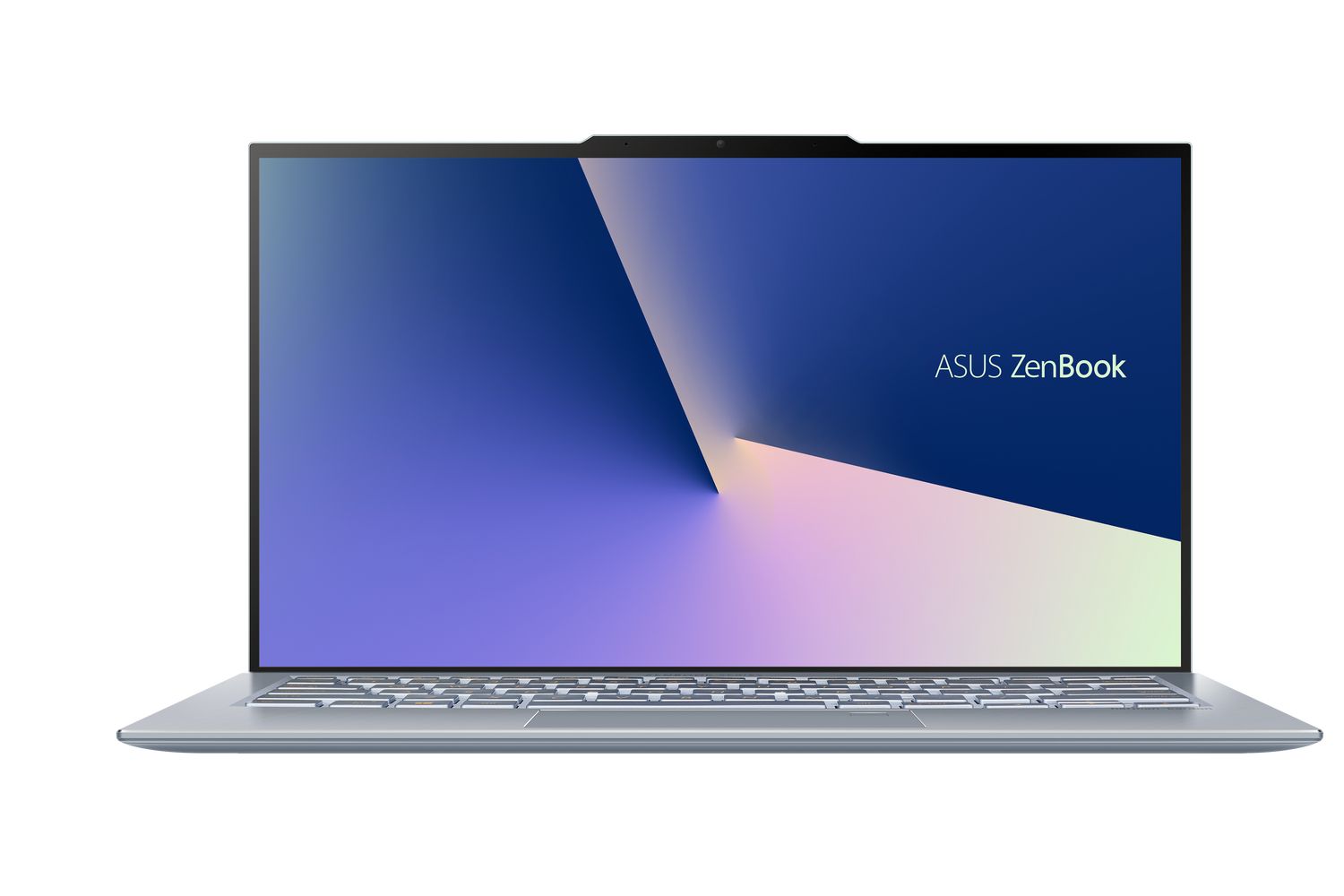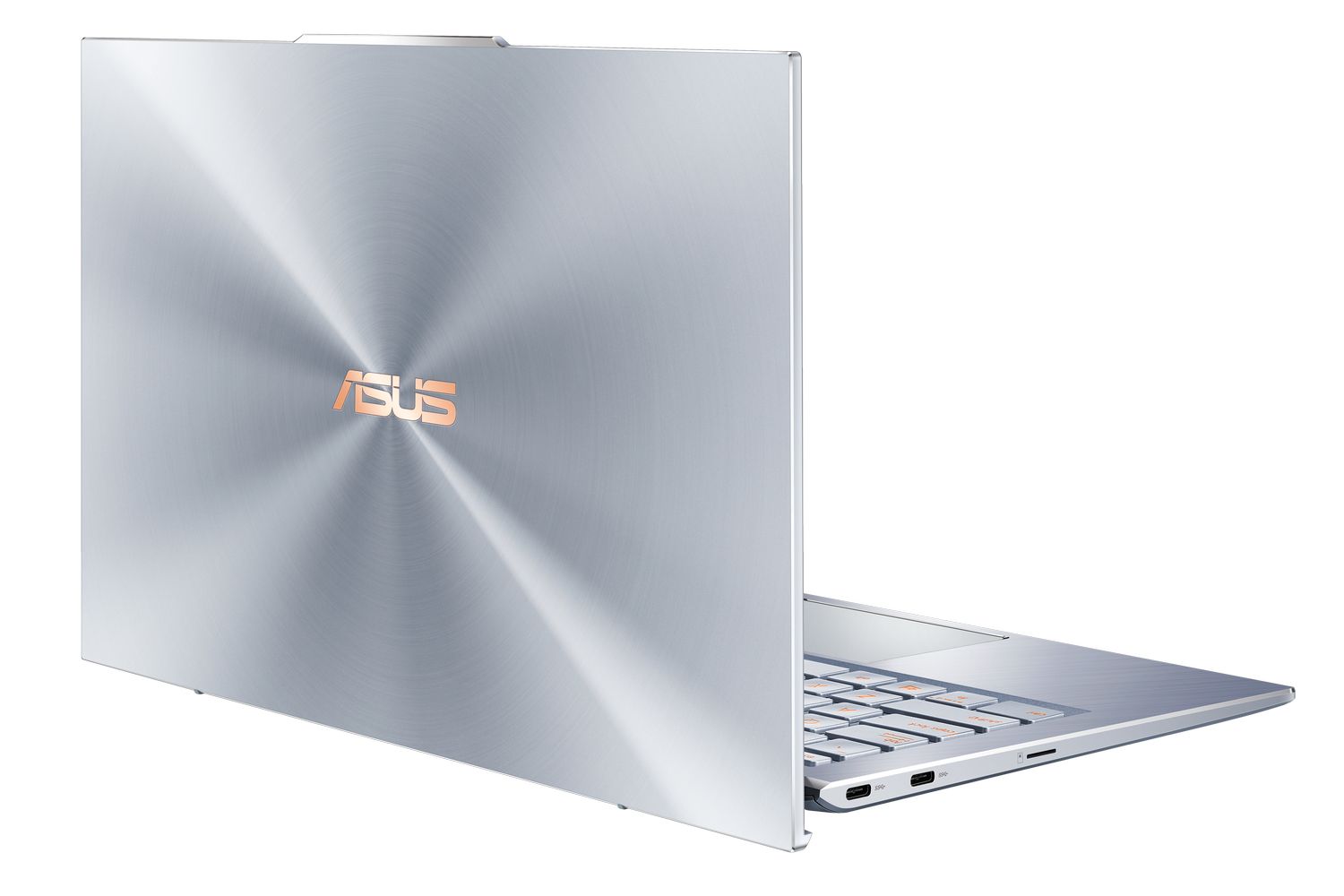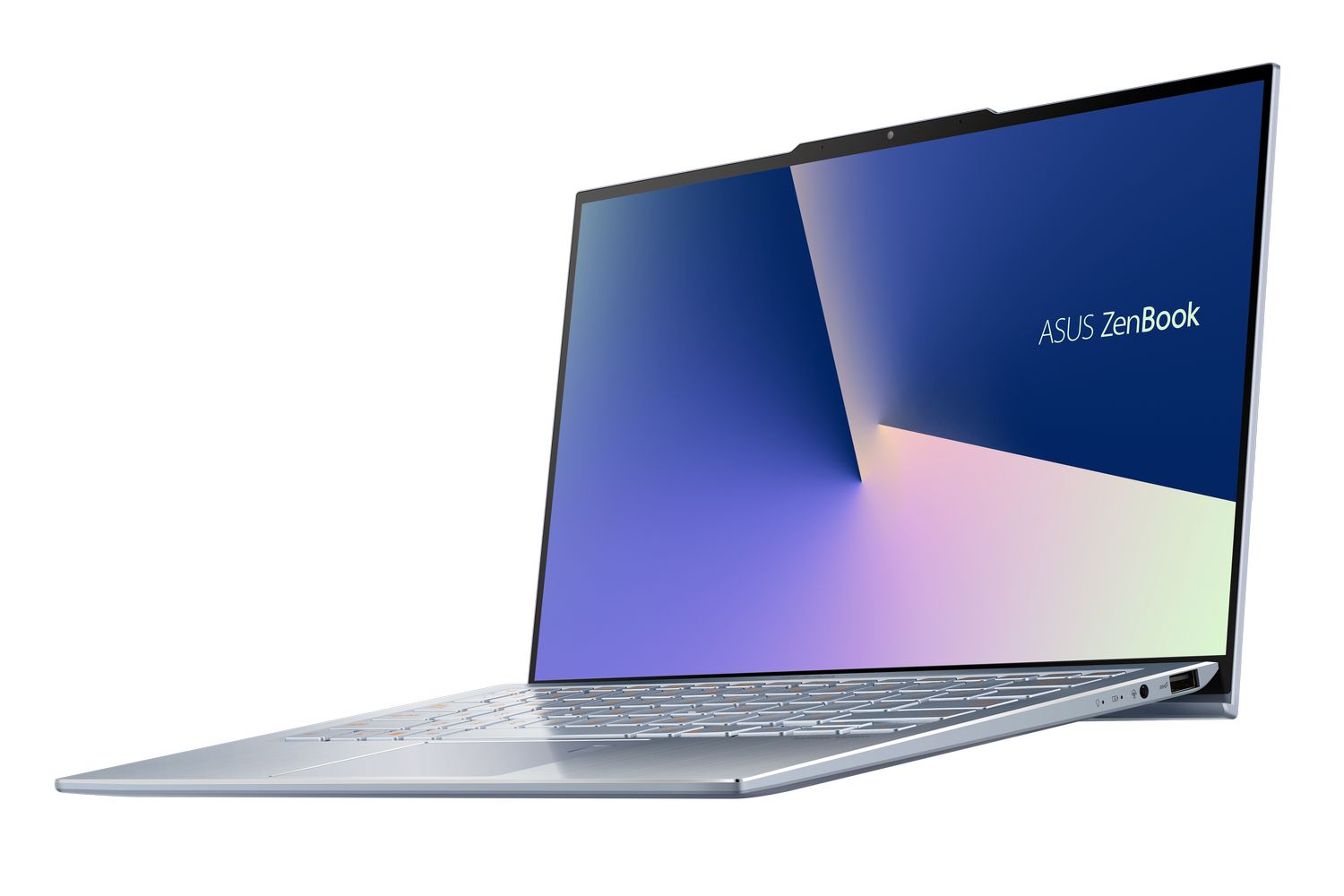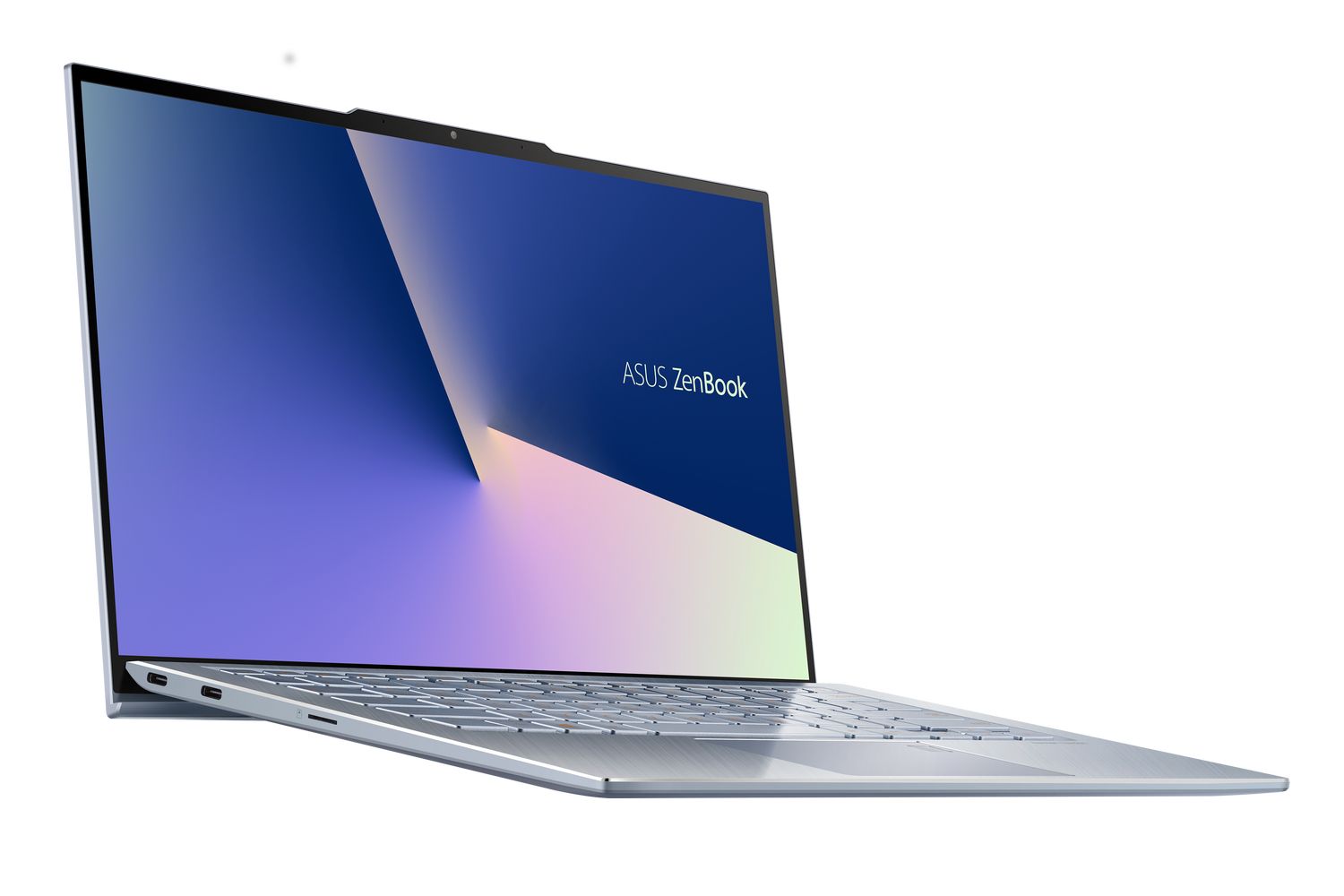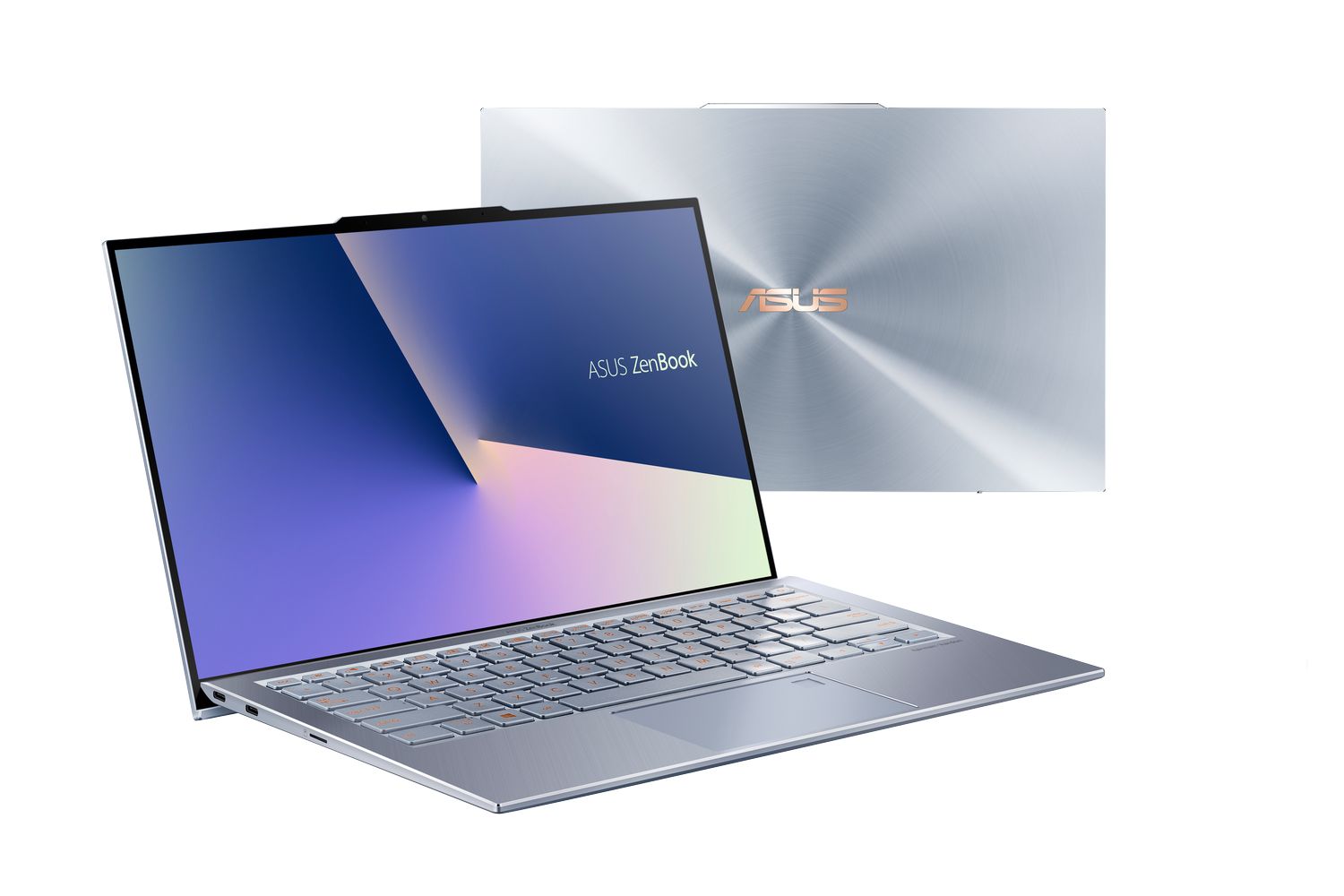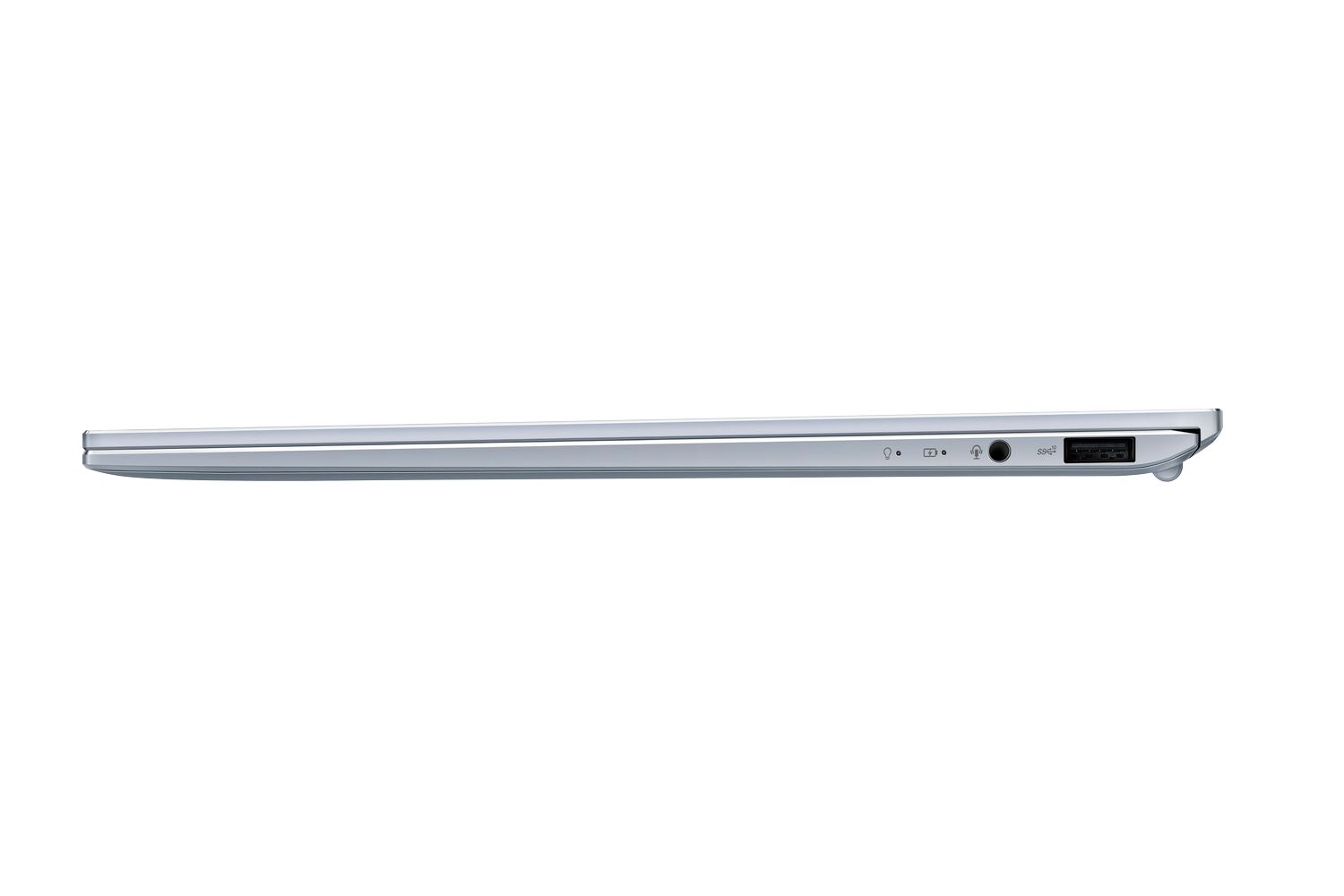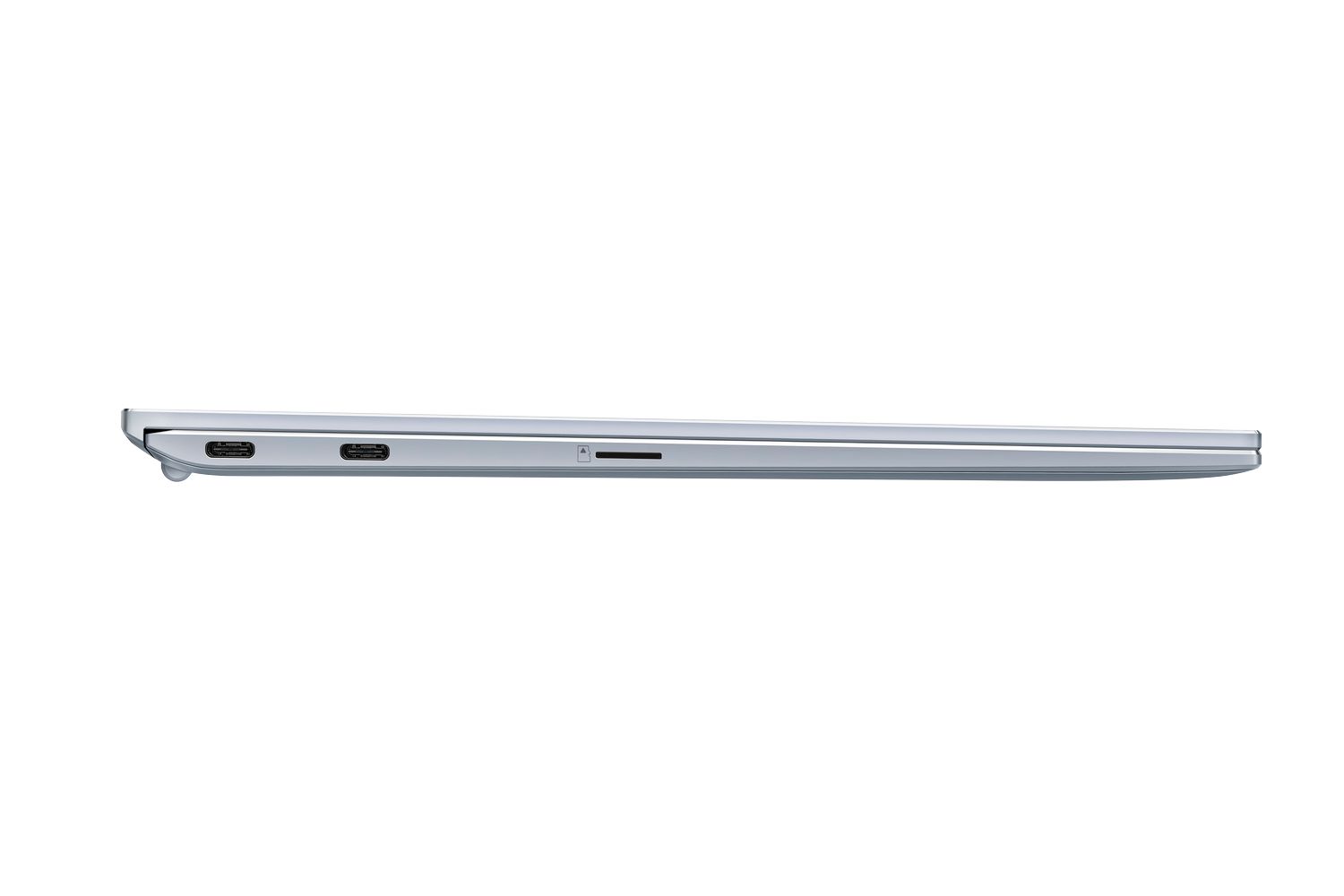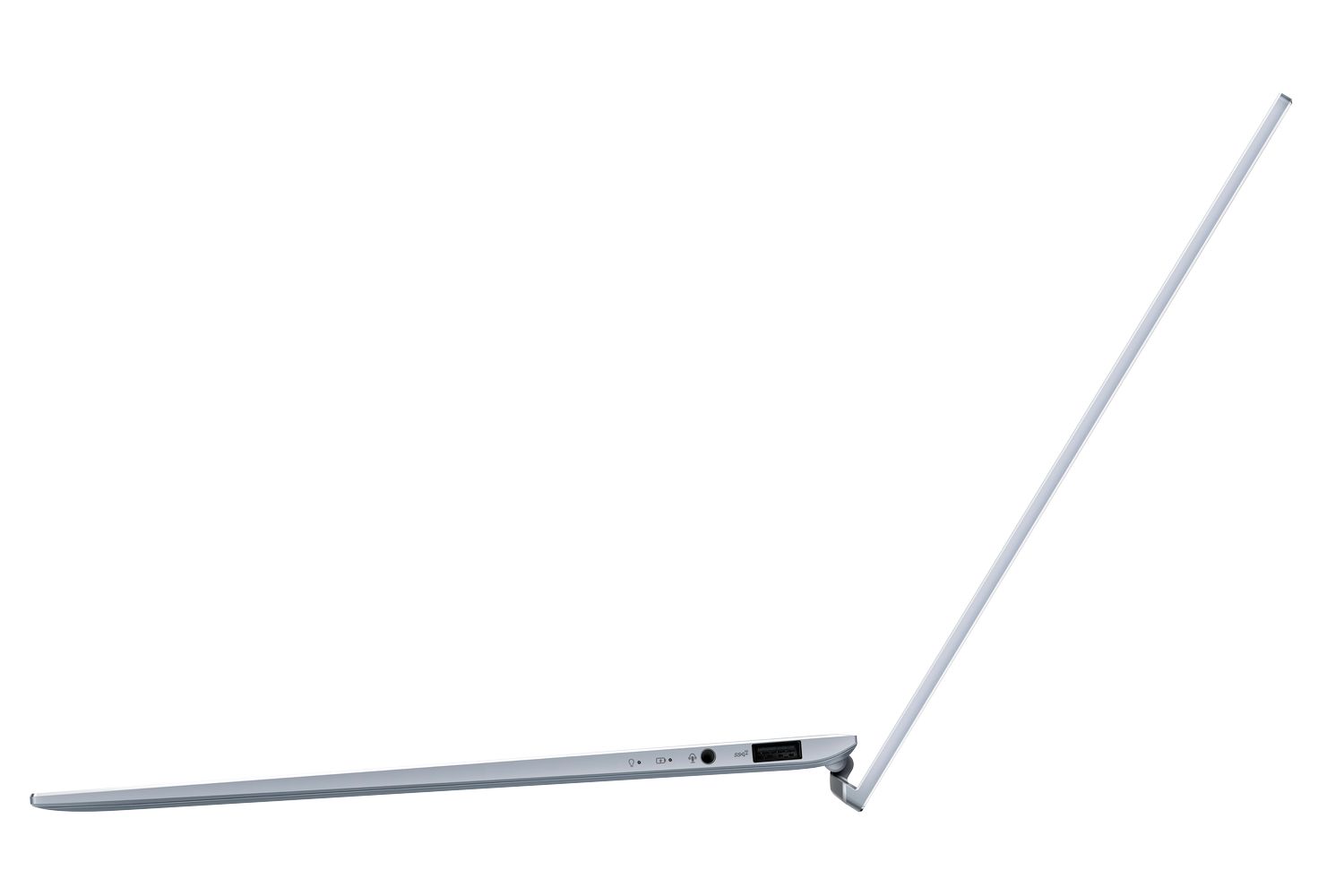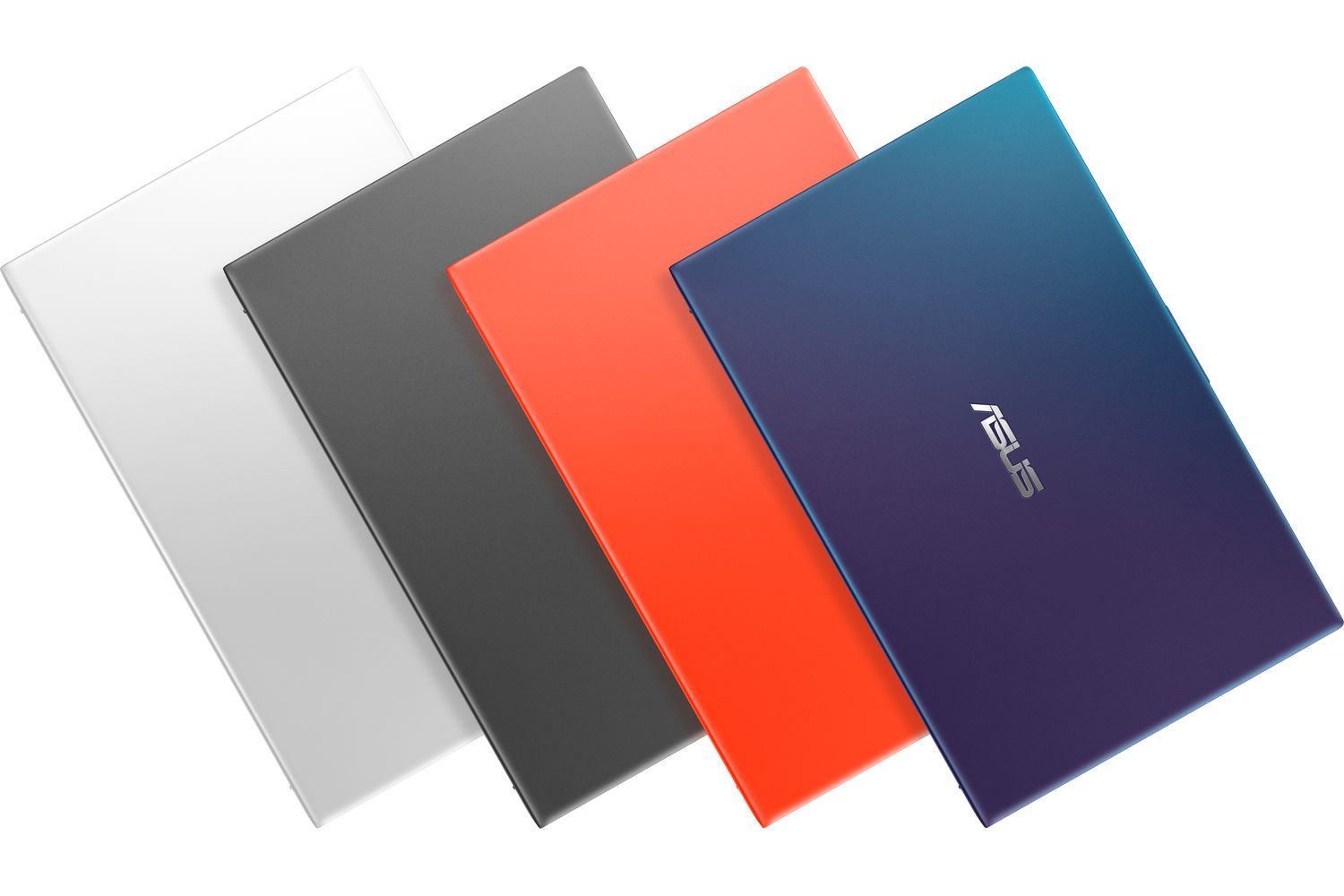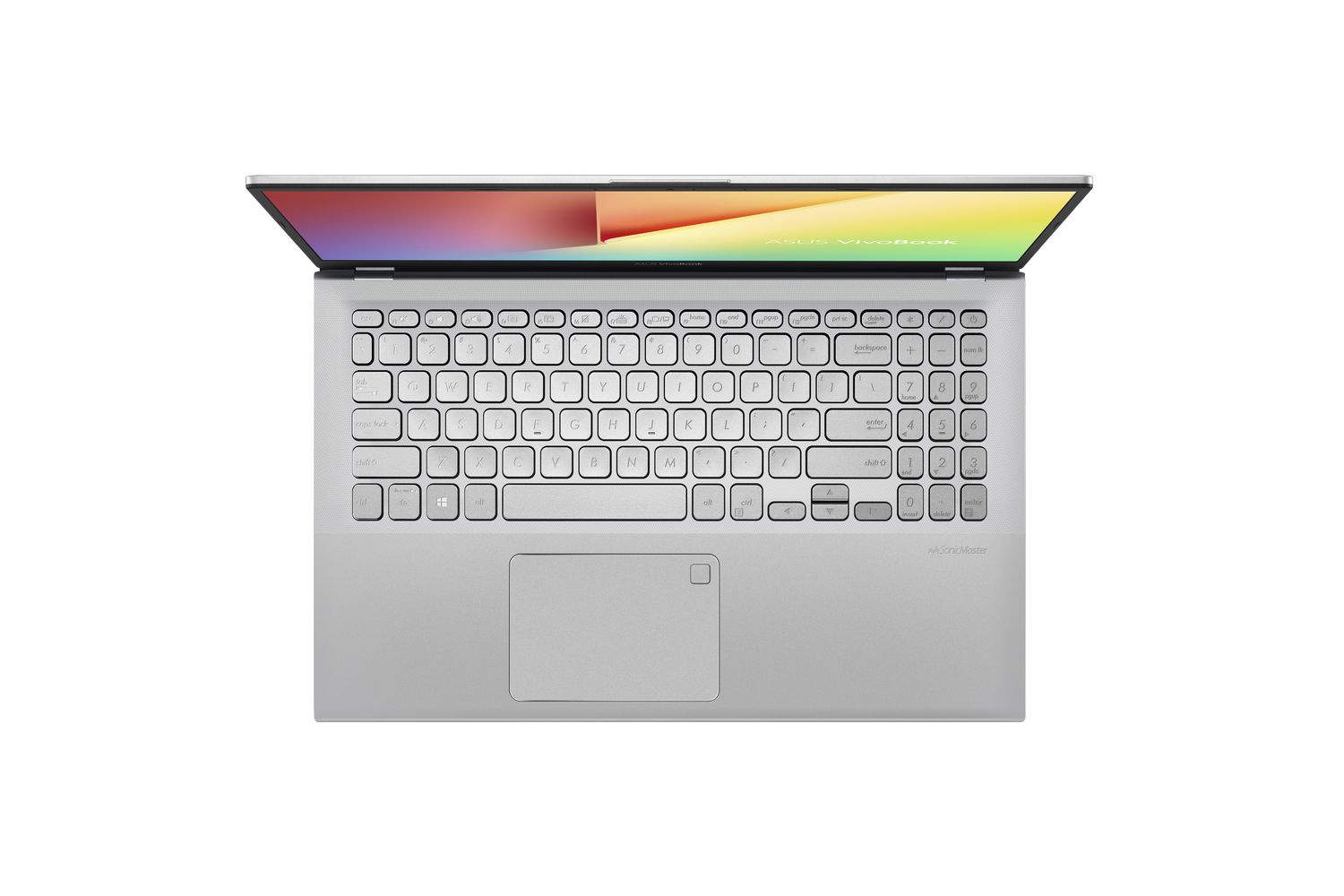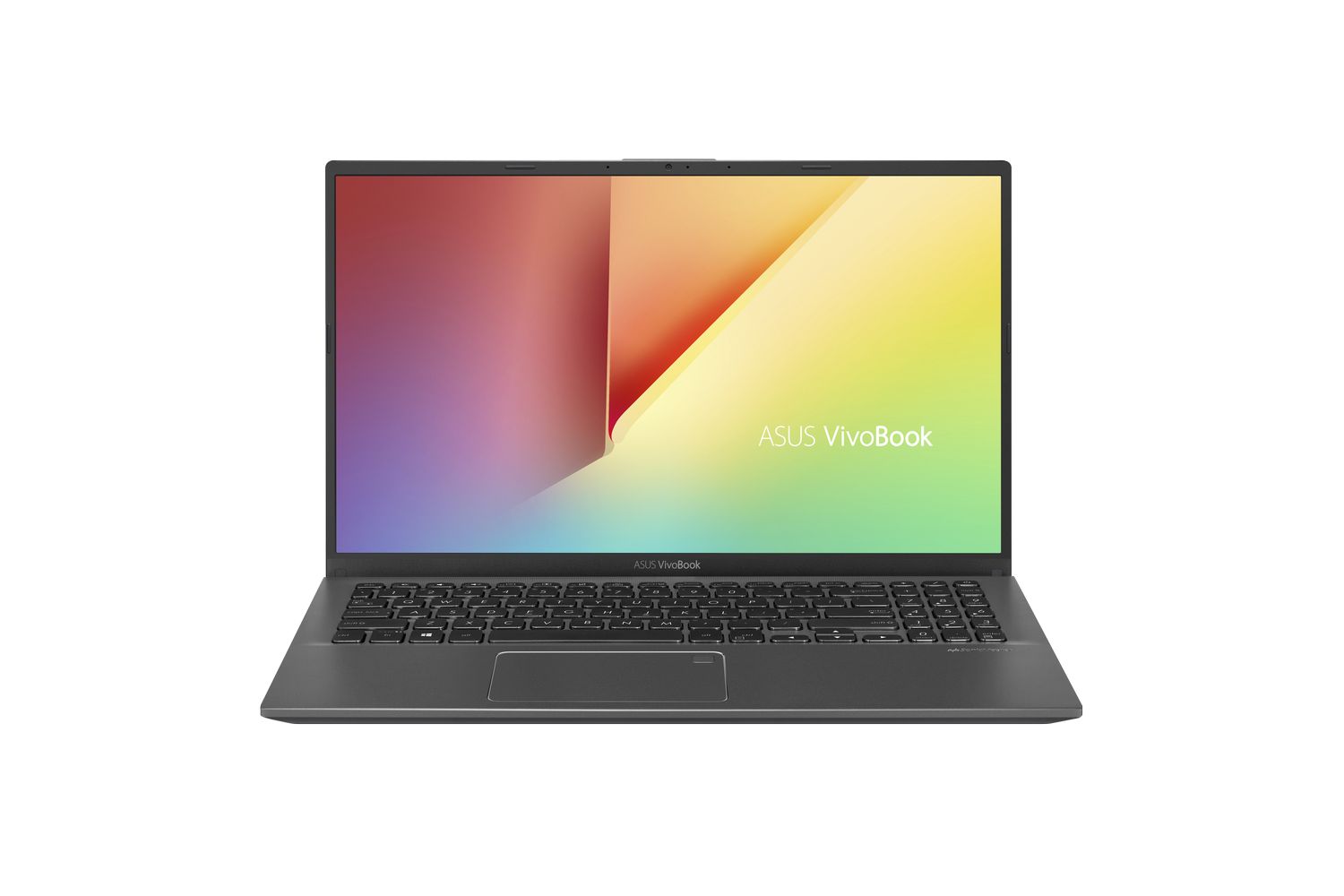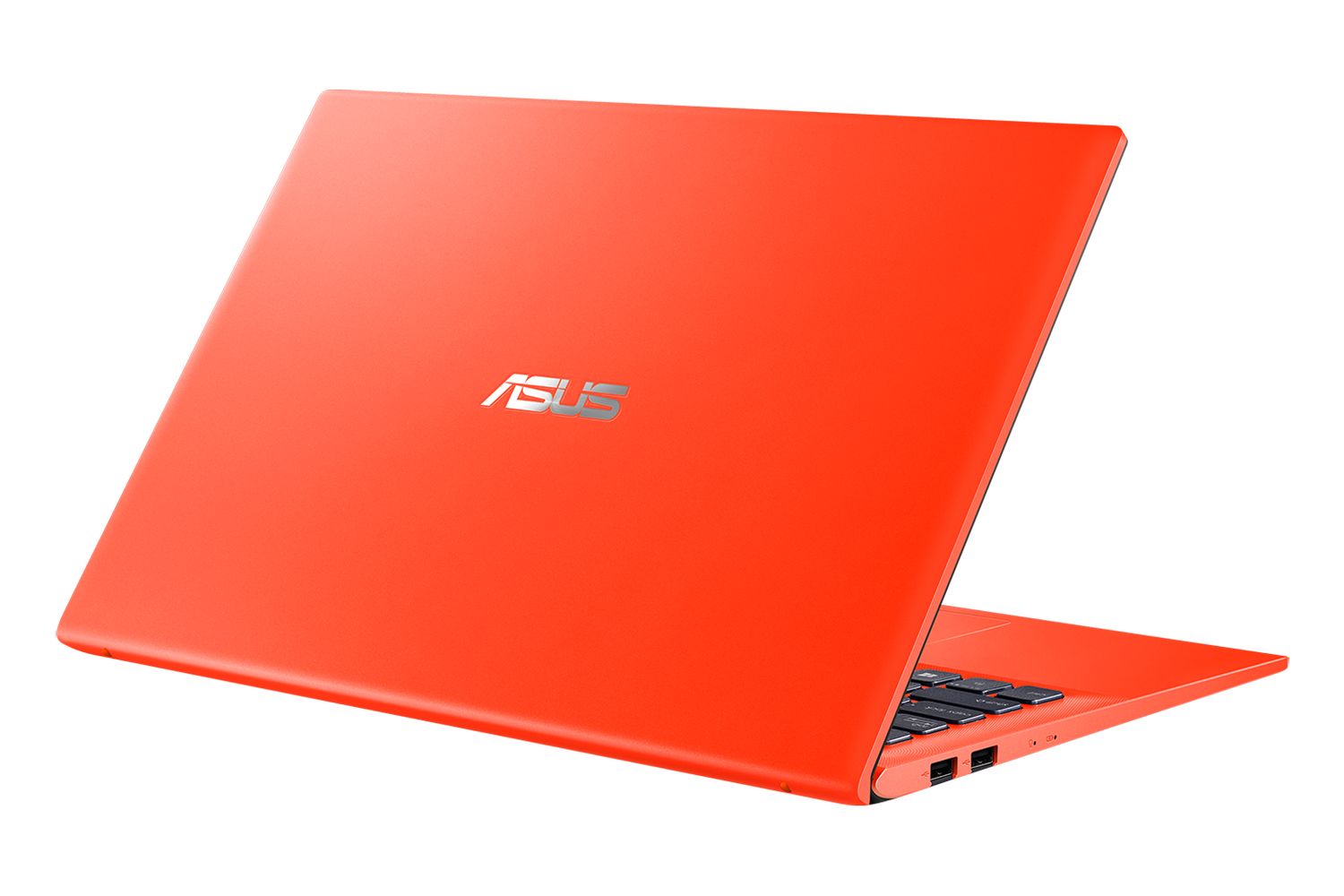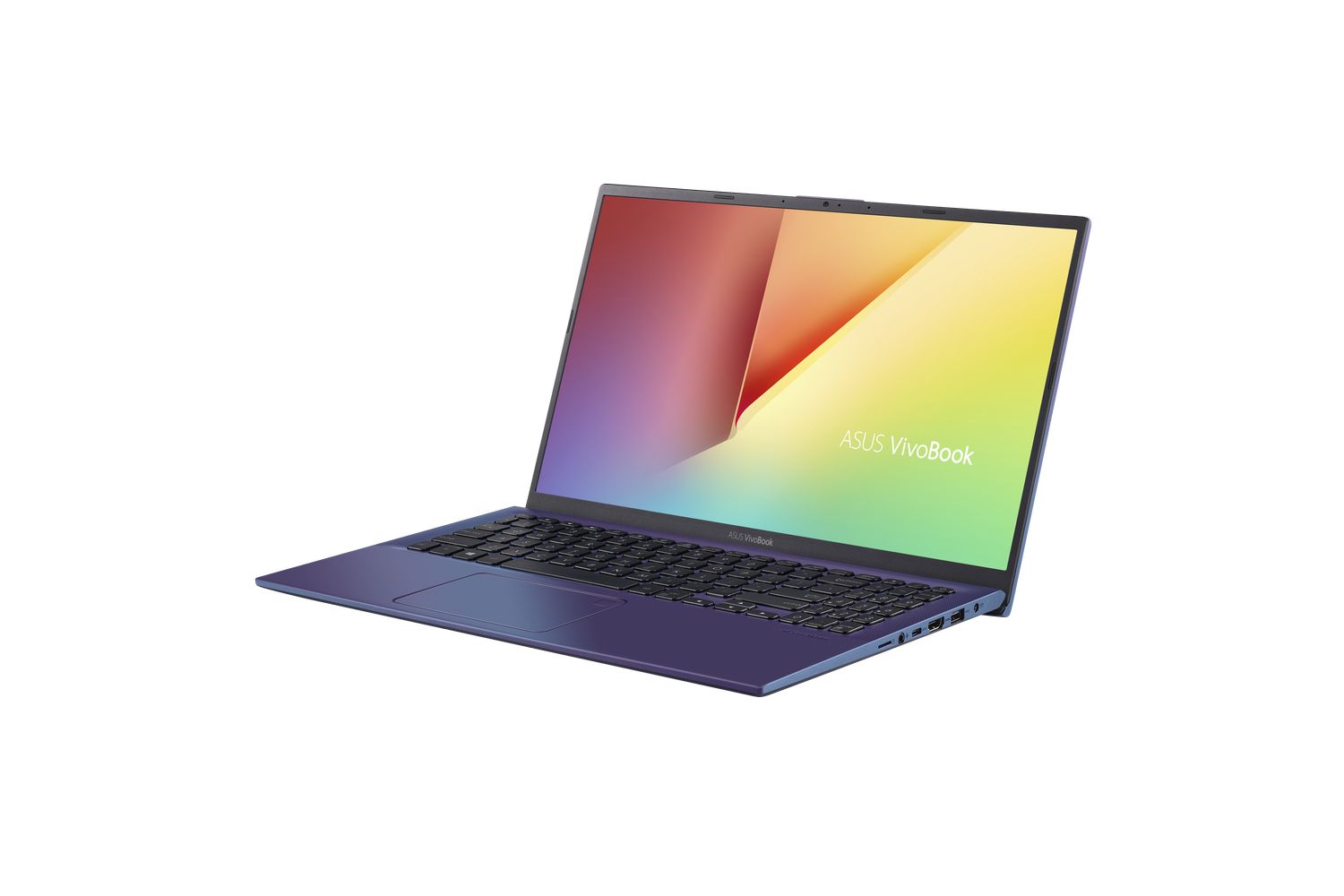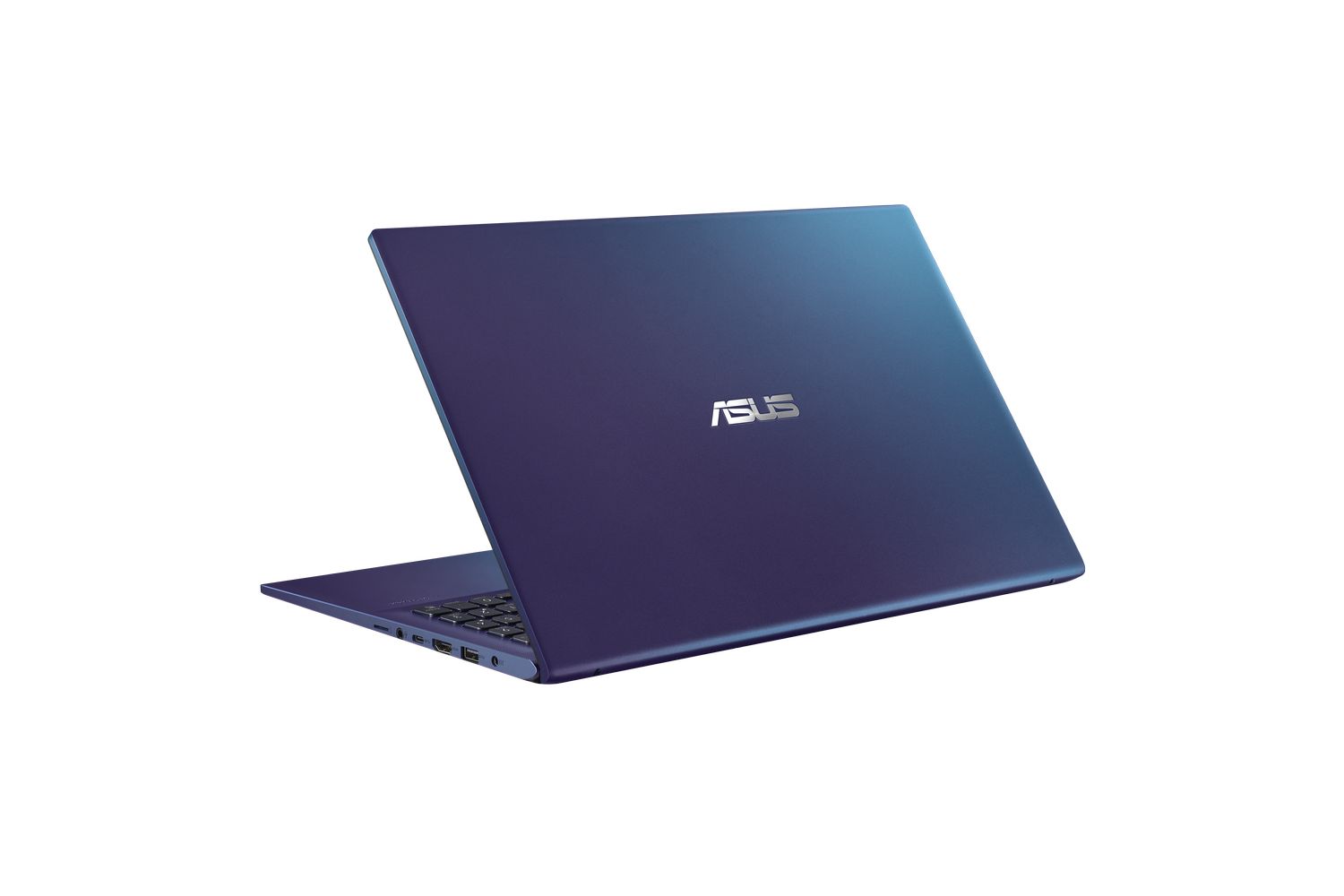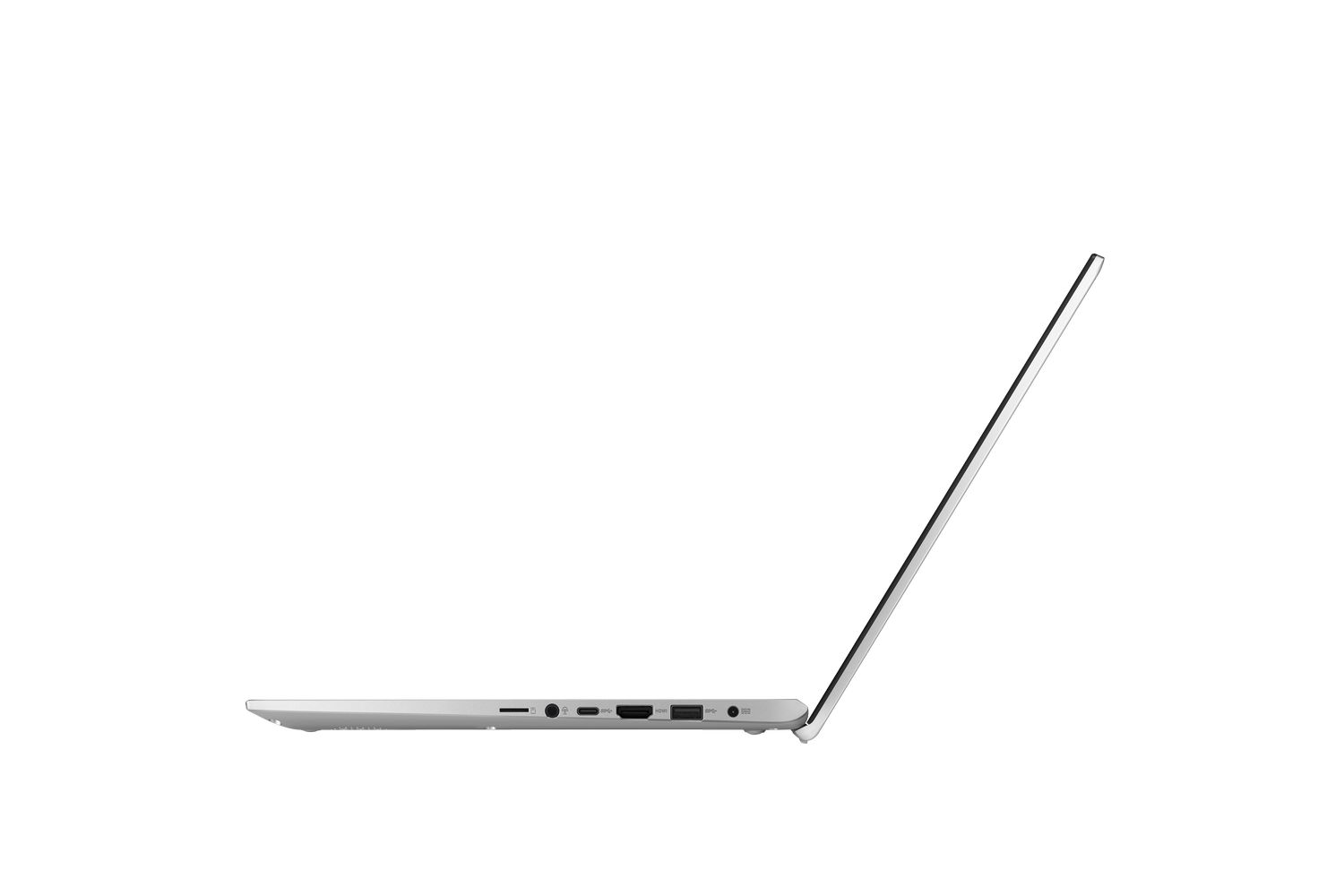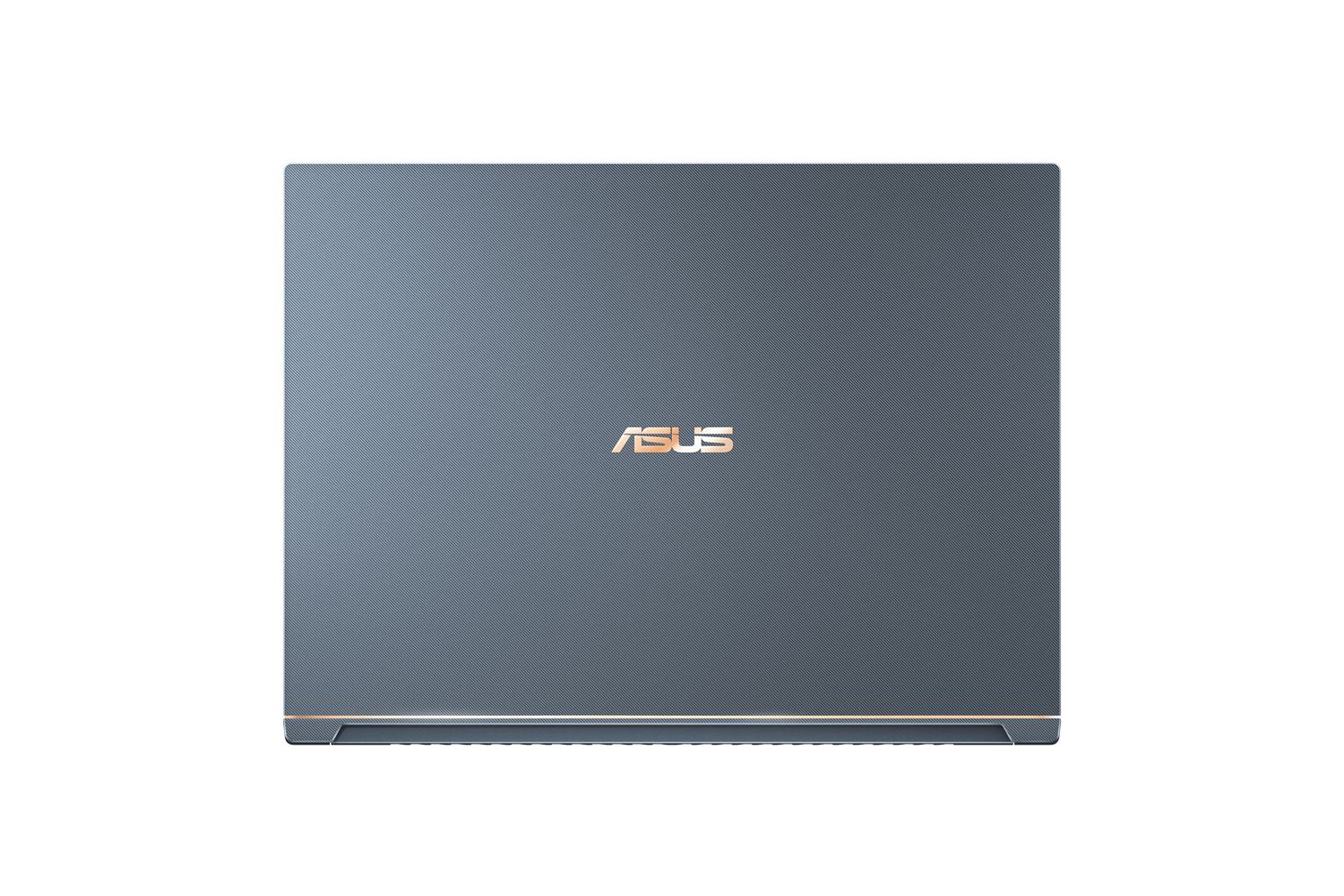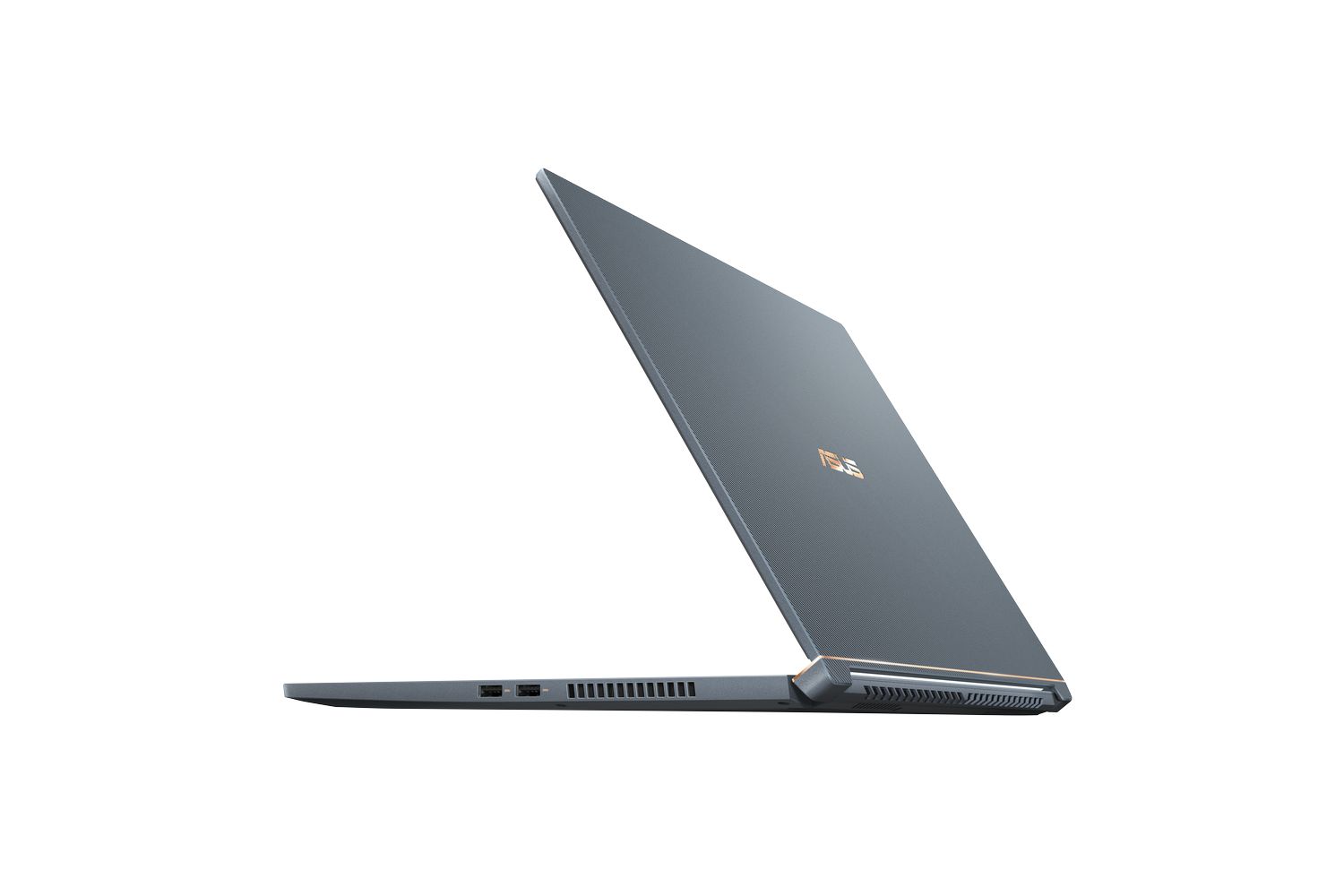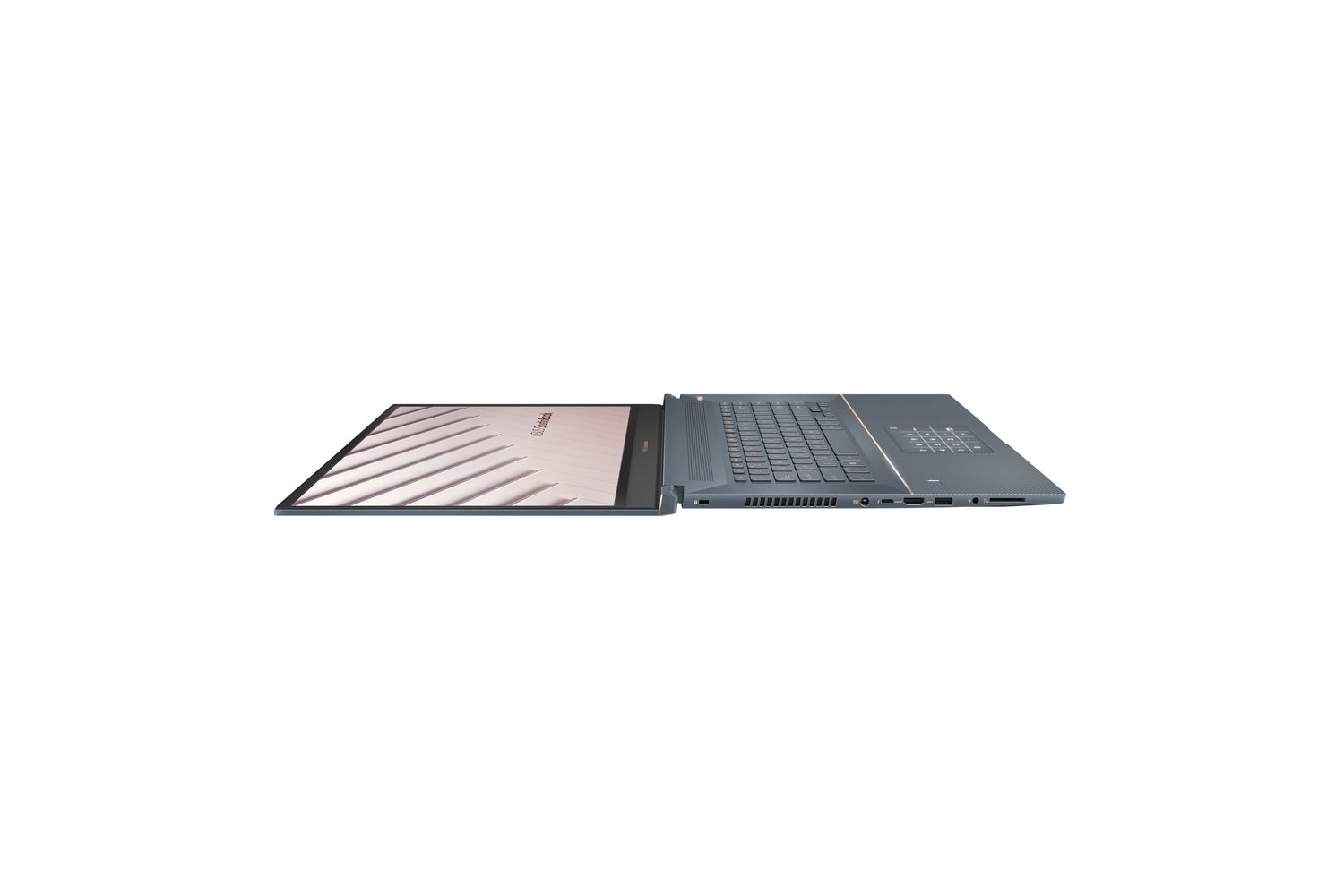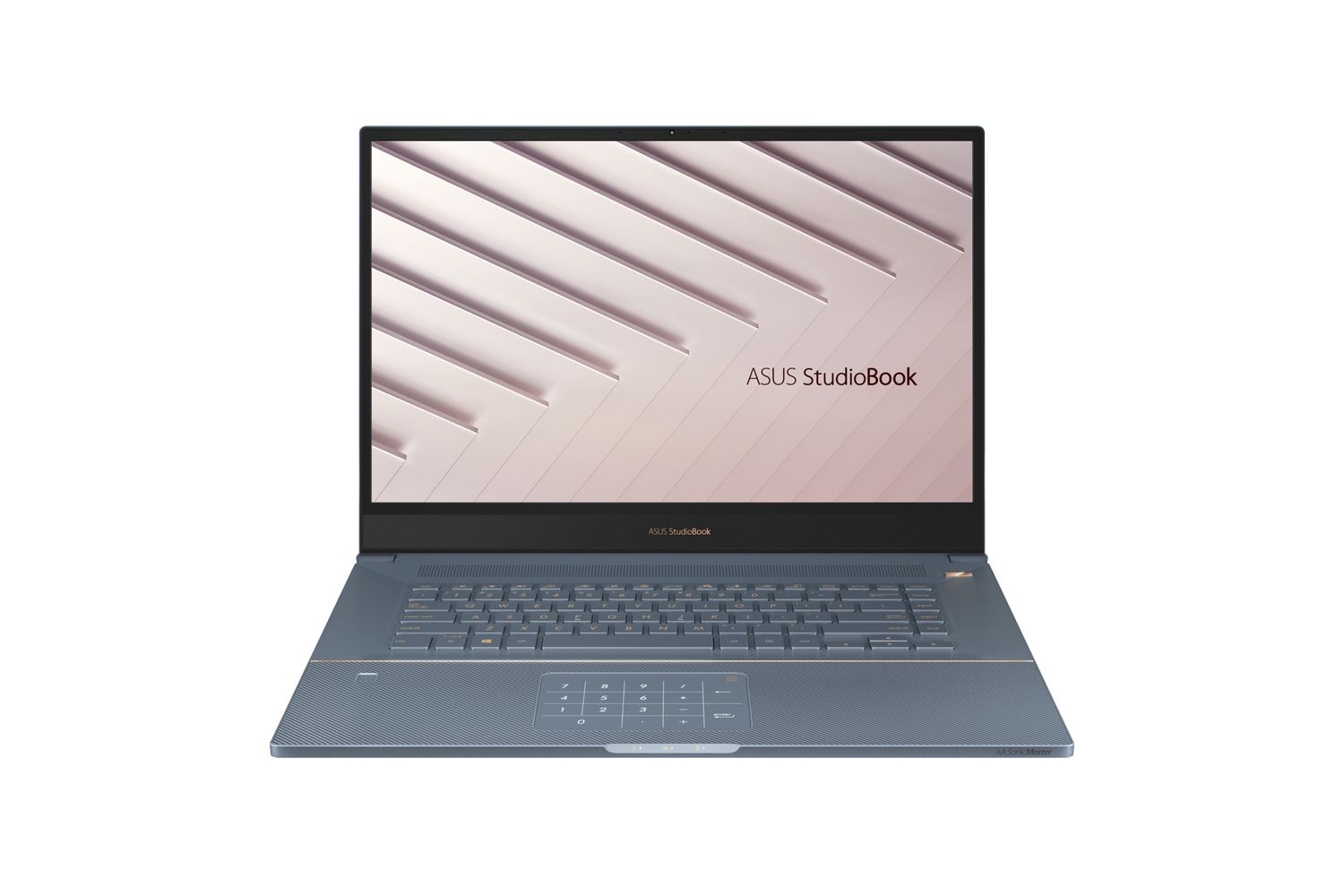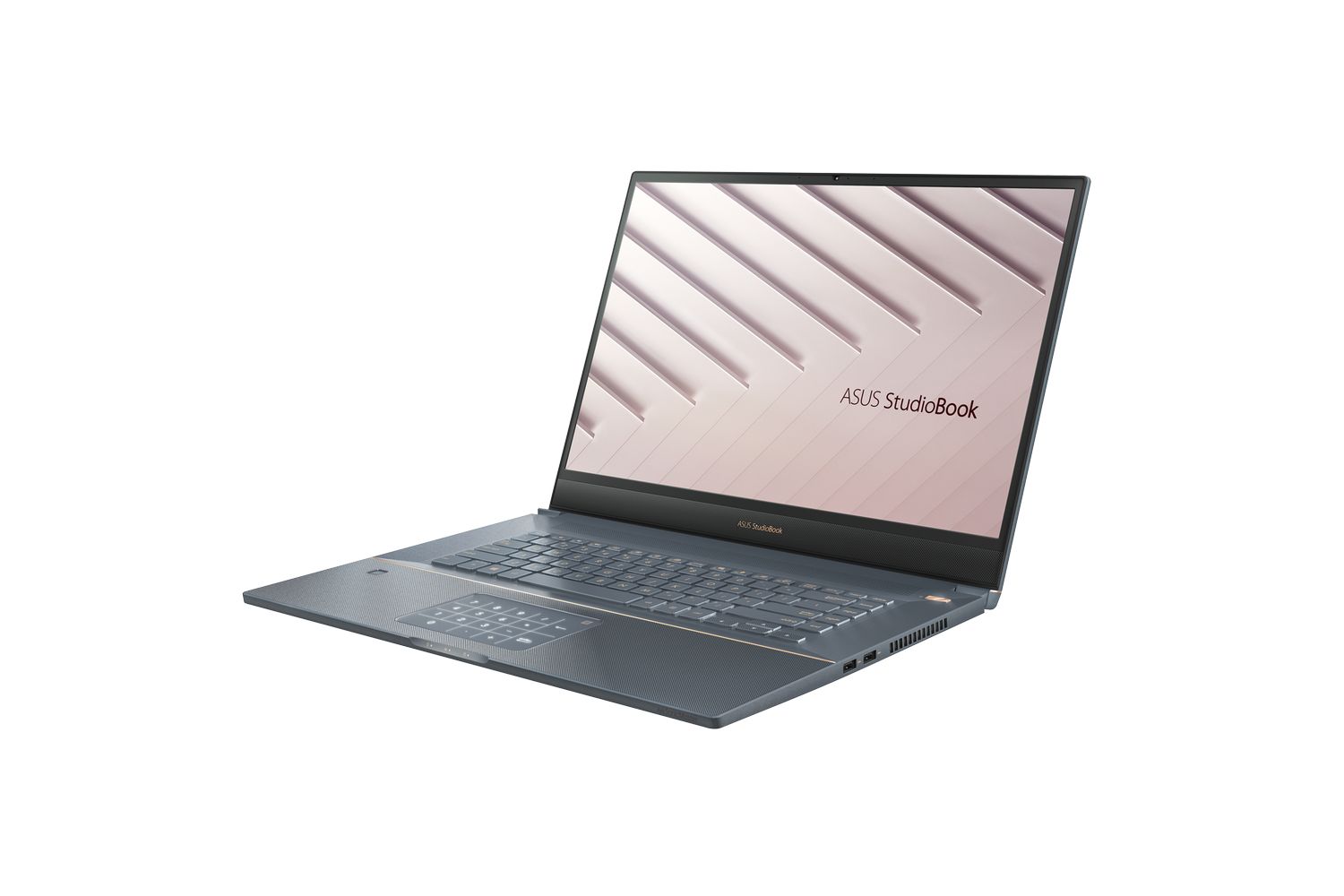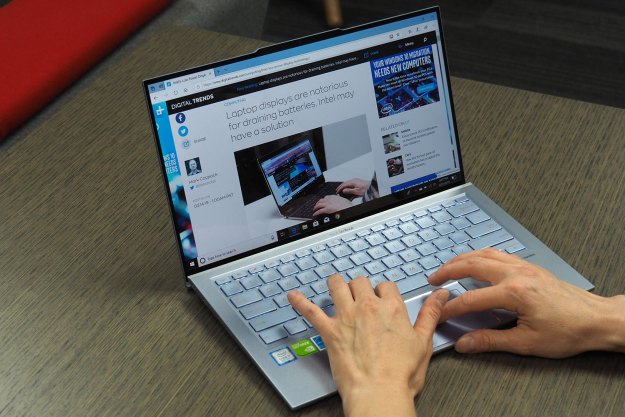Asus is introducing some class-leading laptops at CES 2019, focusing on its latest trend of squeezing as much machine as possible into the tiniest chassis. The ZenBook S13 is the world’s slimmest and thinnest (with a discrete GPU), according to the company, while a new line of VivoBooks leverages small bezels and discrete graphics while the StudioBook S aims at professional-level components.
Asus ZenBook S13
The ZenBook S13’s name is a bit of a misnomer, given that it’s equipped with a 13.9-inch display rather than the usual 13.3-inch option. But that’s just fine because Asus leverages the “world’s slimmest bezels” to enable a 97 percent screen-to-body ratio. That’s spectacular, and it means you’re getting a lot of display packed into a chassis that’s much closer to the traditional size. Specifically, you’re getting a 13.9-inch Full HD (1,920 x 1,080) panel with 2.5mm bezels, 100 percent sRGB color gamut and 400 nits of brightness.
Key Specs
- Processor: Core i5-8265U, Core i7-8565U
- Graphics: Up to Nvidia GeForce MX150
- Memory: Up to 16GB RAM
- Storage: Up to 1TB PCIe SSD
- Battery: 50 watt-hour
- Weight: 2.43 pounds
- Ports: 1 x USB-A 3.1 Gen 2, 2 x USB-C 3.1 Gen 2, 1 x MicroSD, 1 x audio combo
- Audio: Asus SonicMaser Premium dual speakers
At the same time, the ZenBook S13 also utilizes an Nvidia GeForce MX150 GPU, making it the “world’s thinnest laptop with discrete graphics” as well. And it is thin at just 0.51 inches, while also being relatively light at 2.43 pounds. That didn’t stop Asus from including 50 watt-hours of battery capacity (promising up to 15 hours of longevity) to go with fast and efficient 8th-generation quad-core Whiskey Lake Core i5 and i7 processors. You can choose up to 16GB of LPDDR3 RAM and up to a 1TB PCIe solid-state drive (SSD) for promising performance.
Connectivity includes the usual ZenBook mix of legacy (USB-A 3.1 Gen 2) and futuristic (USB-C 3.1 Gen 2) ports, but there’s no Thunderbolt 3 onboard. Asus hasn’t yet announced pricing for the ZenBook S13 UX392, but availability will start in Q1 2019 and color options will include a new Utopia Blue with Rose Gold accents.
Asus VivoBook 14, 15, and 17
The VivoBook is Asus’s line of more mainstream laptops, and the company is introducing a full line that also aims at leveraging smaller bezels to fit in as much machine as possible. The line focuses on providing high-powered components including discrete graphics while building in the company’s recent engineering feats like the ErgoLift hinge that helps control heat and create a comfortable typing angle.
Key Specs
- Processor: Up to Core i7-8565
- Graphics: Nvidia GeForce MX110 or MX130
- Memory: Up to 16GB RAM
- Storage: Up to 256GB SSD, up to 2TB HDD
- Battery: VivoBook 14 37 watt-hour, VivoBook 15 32 or 37 watt-hour, ViviBook 17 32 watt-hour
- Weight: VivoBook 14 3.3 pounds, VivoBook 15 3.5 pounds, VivoBook 17 4.6 pounds
- Ports: 1 x USB-A 3.1 Gen 1, 1 x USB-C 3.1 Gen 1, 1 x USB-A 2.0, 1 x HDMI, 1 x MicroSD, 1 x audio combo
- Audio: Dolby Atmos Sound
There are three members of this new family, the VivoBook 14 with a 14-inch IPS HD (1,280 x 720) or Full HD display, the VivoBook 15 with a 15.6-inch HD or Full HD display, and the VivoBook 17 with a 17.3-inch HD+ (1,600 x 900) or Full HD display. The smaller models offer 7th-generation Intel Core i3 or 8th-generation Whiskey Lake Core i3, Core i5, and i7 CPUs, while the VivoBook 17 sticks with the latest processors. All can be equipped with up to 16GB of RAM and a combination of up to 256GB SSD and up to 1TB hard disk drive (HDD). Discrete GPU options include the GeForce MX110 and MX130.
These are also relatively thin and light notebooks, with the VivoBook 14 at 0.77 inches and 3.3 pounds, the VivoBook 15 at 0.77 inches and 3.5 pounds, and the VivoBook at 0.84 inches and 4.6 pounds. Each of the laptops includes a range of connectivity options including USB-A 3.1 Gen 1, USB-C 3.1 Gen 1, and full-size HDMI ports. Again, Asus hasn’t provided pricing information yet, but the new VivoBook line will ship in Q1 2019.
Asus StudioBook S
The final Asus laptop we’ll cover is the StudioBook S, a laptop that’s aimed directly at content-creation professionals who need the most powerful and reliable components. You’ll find an optional Intel Xeon six-core E-2176M CPU to go with an 8th-generation six-core i7-8570H option, and the Nvidia Quadro P3200 CPU promises certified drivers for today’s most important creative applications.
The workstation can be equipped all the way up to 64GB of DDR4 RAM and up to 4TB of PCIe SSD. Storage can be further expanded by plugging in a CPU-attached RAID drive with up to 48 gigabits per second (Gbps).
Key Specs
- Processor: Core i7-8570H, Xeon E-2176M
- Graphics: Nvidia Quadro P3200
- Memory: Up to 64GB RAM
- Storage: Up to 4TB PCIe SSD, external CPU-attached RAID up to 48Gbps
- Battery: 57 watt-hour
- Weight: 5.27 pounds
- Ports: 1 x USB-C with Thunderbolt 3, 3 x USB-A 3.1 Gen 2, 1 x HDMI, 1 x SD card, 1 x audio combo
- Audio: Dolby Atmos Sound
The StudioBook S also leverages 5.3mm bezels and an 84 percent screen-to-body ratio to pack in a 17-inch Full HD display. Like the performance components, this display is focused on providing for the needs of photo and video editors. It sports a 16:10 aspect ratio with a 178-degree wide-view and anti-glare panel that promises 97 percent DCI-P3 color gamut coverage with an accuracy of less than 2.0 and Pantone validation.
This a relatively svelte workstation-class laptop at 0.72 inches thick, and it’s also reasonably light for a 17-inch laptop at 5.27 pounds. Connectivity includes three USB-A 3.1 Gen 2 ports, a USB-C port with Thunderbolt 3, and an HDMI port. Pricing and availability remain undetermined, but Asus says the StudioBook S should arrive “in the coming months.”
Editors' Recommendations
- The new Asus Zenbook S 13 is like a MacBook, only better
- Asus ZenBook S 13 Flip vs. HP Envy x360 13: it comes down to price
- AMD Ryzen 6000 tested in a new Zenbook against Intel’s best
- Asus ZenBook 13 OLED vs. Dell XPS 13
- The secondary 4K screen on the new Asus ZenBook Pro Duo can now tilt
